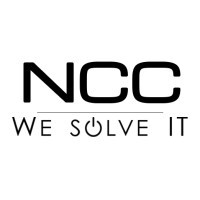Provider Shares Irving Help Desk Best Practices for Managed IT Services
Irving, United States - August 20, 2025 / NCC Data - Managed IT Services in Irving /
Irving Managed IT Services Provider Shares Help Desk Best Practices
IT help desk best practices are like fire drills for your support team – except the fire’s already started. Most businesses wait until tickets pile up like a bad to-do list before fixing what’s broken.
The pros? They don’t just build desks that answer calls – they build systems that prevent them.
82% of customers expect their IT issue to be solved on the first call. That’s not a benchmark – that’s a stopwatch. If your help desk needs three tickets and a group chat to close a printer error, you’re not solving problems – you’re narrating them. Best practices are how elite teams compress chaos into control.
Daren Boozer, CEO of NCC Data - Trusted Managed IT Services Provider in Irving, says, “A ticket unresolved is rarely technical – it’s architectural.” That one-liner captures the spirit of what follows.
This blog maps out the infrastructure behind real help desk success: smarter categories, tighter processes, sharper communication. No fluff. No motivational posters. Just the blueprint for making your help desk less of a dumping ground – and more of a differentiator.
Stop Fixing Symptoms – Start Designing Smarter Help Desk Models
Top-Tier Irving Managed Services Provider About IT Help Desk Best Practices for Building a High-Performance Support Function
Your help desk shouldn’t be a staging ground for backlogs. Well-defined support structures and IT help desk best practices turn day-to-day resolution into reliable business continuity.
1. Establish layered ownership across ticket workflows
Delegating work based on ticket complexity reduces handoffs and improves accuracy.
- Tier 1 handles common issues with documented responses
- Tier 2 supports intermediate troubleshooting with diagnostic access
- Tier 3 is reserved for critical, specialized issues
2. Use metrics that guide behavior, not just track activity
Data should refine processes, not just report on them.
- Time to resolution vs. time to response
- First-contact resolution rate
- Reopen rate and escalation frequency

3. Prioritize knowledge development inside the workflow
Support teams need systems that learn alongside them. Build internal notes, attach KB articles to tickets, and auto-suggest related documentation at intake to shorten discovery time.
4. Design escalation paths that reduce downtime
When things escalate, delays multiply.
- Route based on skill, not role
- Trigger internal alerts for time-sensitive tickets
- Include business impact scoring for each case
Invest in stability before adding tools. Before layering on new platforms, validate that core workflows are clean. Replacing a single service desk agent in North America can require a minimum investment of $12,000, showing that optimizing is key before hiring.
Applying IT Help Desk Best Practice in Fast-Paced Operational Environments
Volume and urgency are constant in high-tempo operations. Applying IT help desk best practice in these environments means removing ambiguity and reinforcing accountability.
1. Centralize intake to one source of truth
Routing everything through a single platform minimizes noise and improves triage. Use automated tagging, request forms, and dynamic fields to assign requests accurately and reduce ticket sprawl.
2. Define support hours with overflow strategies
Transparency drives predictability.
- Document and publish coverage windows
- Identify peak traffic hours through ticket volume history
- Set routing logic for after-hours support
3. Build feedback into every resolution cycle
Every closed ticket is an opportunity to gather insight.
- Trigger post-resolution feedback with a single question
- Link responses to specific agents or workflows
- Review weekly to identify recurring friction points
4. Manage ticket flow using time-based escalation rules
Use timed automation to keep requests moving:
- Escalate unassigned tickets after 15 minutes
- Notify queue owners if a ticket remains open after 1 hour
- Flag managers if the ticket status has not changed in 4 hours
5. Improve user trust with consistent status communications
Users value visibility. Set automated notifications at key points during the resolution process to confirm receipt, assignment, and outcome. Consistency matters more than speed when expectations are set clearly.
Operational Enhancements from Applying IT Help Desk Best Practice
| Support Focus Area | Improvement When Best Practices Are Applied |
| Ticket Intake Clarity | Reduces duplicate submissions and accelerates initial routing |
| Queue Visibility | Enhances prioritization and allows real-time workload balancing |
| Cross-Team Collaboration | Prevents siloed troubleshooting and improves context-sharing across departments |
| User Experience During Wait Times | Reinforces trust with structured updates and clear next steps |
| Technician Bandwidth Management | Helps distribute requests based on availability and skillset fit |
Aligning IT Help Desk Categories with Best Practices That Improve Service Delivery
Support teams work faster when ticket types are clearly defined. Aligning help desk categories to outcomes allows for better prioritization, smoother escalation, and consistent reporting.
1. Redesign categories to reflect actual user behavior
Too many categories lead to errors. Review usage trends to streamline your taxonomy.
- Prioritize the most-used issue types
- Eliminate ambiguous or duplicate entries
- Monitor category-related delays
2. Segment service requests and incidents with precision
Users often mislabel tickets. Define each type clearly within your intake form:
- An incident refers to something broken or degraded
- A service request covers access, installations, or changes
- This clarity improves triage speed and reduces back-and-forth.
3. Calibrate escalation workflows by category
Escalation should be based on business risk, not convenience.
- Route all data or credential issues to your security team
- Assign hardware problems to logistics or desktop support
- Handle access requests through identity governance protocols
Visibility starts at the classification level. When teams can monitor trends by category, they can plan resources, assign staffing, and adjust training more effectively.
Among high-growth service teams, 51% rely on help desk systems that allow them to isolate ticket behavior by category. This insight enables more focused response strategies, reduces over-escalation, and helps align internal SLAs with real demand.
NCC Data – Designed for Precision. Built for Progress.
NCC Data - Top-Tier Managed IT Services Company in Irving - help organizations build IT support systems that are as responsive as they are reliable. With a focus on clarity, execution, and long-term performance, our solutions don’t just resolve tickets, they reinforce trust across every interaction.

Contact Information:
NCC Data - Managed IT Services in Irving
7301 State Hwy 161 Ste 148
Irving, TX 75039
United States
Daren Boozer
(682) 357-8050
https://nccdata.com/
Original Source: https://nccdata.com/it-help-desk-best-practices/

